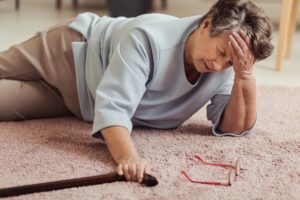
One new study has found that performing strength exercises could help older adults to be able to get back up on their own after experiencing a fall. For the study, the researcher did a meta-analysis review of 41 studies pertaining to the subject. They found that resistance training, targeting both the upper and lower body, could improve a person’s ability to lift themselves back up independently after a fall. The best approaches, they said, provided a combination of education and strength training to older adults.
“One in three people living in the community aged 60 and over have at least one fall per year, and while many falls do not result in major injury or death, they can have a profound effect on the person and may restrict future activity due to fear of falling,” said the study’s lead author, Dr. Elissa Burton.
“Up to two-thirds of older people who fall cannot get themselves off the floor independently, so our research aimed to assess whether interventions such as strength training could help to improve this, while also identifying factors that may contribute to this.
Being Unable to Get up after a Fall Increases Your Risk of Death
The researchers emphasize the basis of information that says being unable to get back up after a fall increases a person’s risk of being hospitalized for the injuries sustained from the fall, is linked to poorer recovery of physical function, and even increases the risk of death. While further research into the strength training needs to be completed, these findings may still be useful to medical practitioners caring for the older adult population in the meantime.
“Teaching the older population specific techniques on how to get up after a fall is critical and in turn could help reduce the negative physical and emotional effects that occur as a result of a fall,” said Dr. Burton.
The paper detailing the meta-analysis is titled “Are interventions effective in improving the ability of older adults to rise from the floor independently? A mixed method systematic review” and was recently published in the Disability and Rehabilitation Journal. If you are interested in learning specific strength training exercises, talk to your doctor about being referred to a physiotherapist or physical trainer to discuss the best course of action.
Also read:
- Strength Training for Seniors: Tips and Exercises
- Best Balance Exercises for Seniors to Prevent Falls